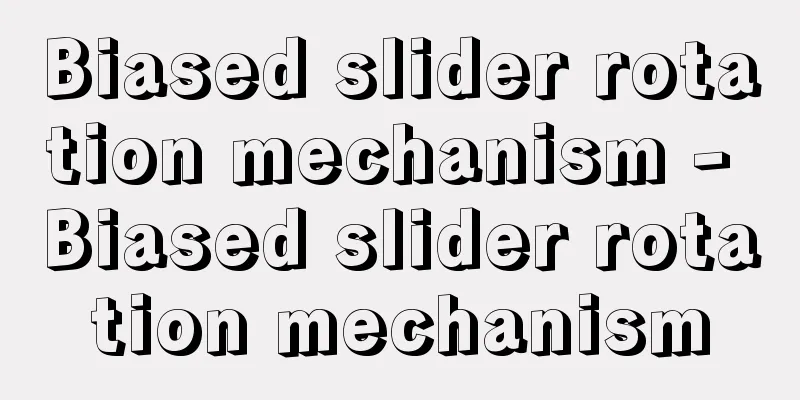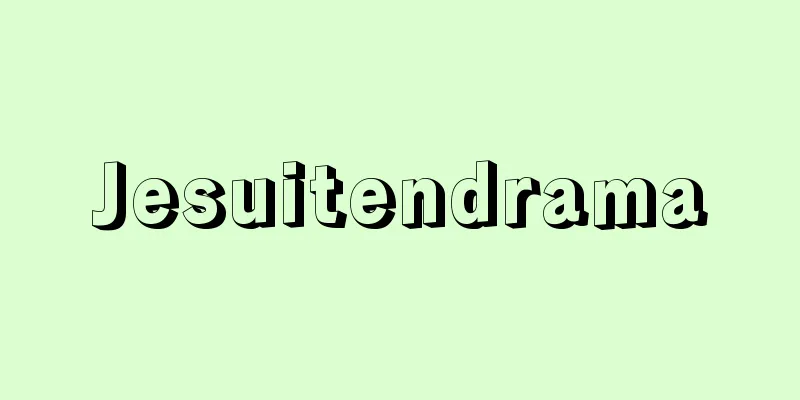Leasehold - Shakuchi

|
It refers to renting other people's land for the purpose of owning a building, planting bamboo or trees, farming, etc., or land rented for such purposes. [Takahisa Awaji] Types and methods of land leaseThere are three important methods for renting someone else's land, depending on the purpose and type of rights of the land. The first is to establish a surface right as a real right (Civil Code Article 265 et seq.). This can be used when owning structures such as buildings or bamboo and trees. The second is to establish a fetus right as a real right (Civil Code Article 270 et seq.). This can be used when cultivating someone else's land or raising livestock on it. The third is to establish a leasehold right as a claim (Civil Code Article 601 et seq.). There are no restrictions on the purpose. In this way, for example, when renting land for the purpose of owning a house, there are two methods: establishing a surface right (concluding a surface right establishment contract) and establishing a leasehold right (concluding a land lease contract as a lease contract). The method to be used is up to the agreement of the parties, but in practice, leasehold rights are used in most cases. [Takahisa Awaji] Land lease lawSuperficies, emphyteusis, and leasehold rights are each regulated by the Civil Code and are protected by a certain degree of legal protection. Of these, superficies and emphyteusis are real rights and therefore are strongly protected, but leasehold rights are not so protected as they are claims. As a result, the demand for protecting tenants grew, and the Land Lease Law was enacted in 1921 (Taisho 10), which called superficies and leasehold rights for land for the purpose of owning buildings leasehold rights and sought to protect them. In this way, the Land Lease Law, along with the House Lease Law, played an important role in protecting real estate tenants, but in response to changes in social and economic circumstances, there was a growing social demand to make the land and house lease systems easier to use, and the Land Lease Law, House Lease Law, and the Building Protection Law (Building Protection Law) were comprehensively reviewed, and the Land and House Lease Law, which significantly revised their contents, was enacted in 1991 (Heisei 3) and came into effect on August 1, 1992. As a result, the above three laws have been abolished, but for land lease contracts and house lease contracts established before the enforcement of the new law, the provisions of the new law that are disadvantageous to land leasers and house leasers do not apply as a transitional measure, and the provisions of the previous Land Lease Law and House Lease Law apply (Supplementary Provisions of the Land Lease Law, Articles 5 to 14). The following explanation will focus on land leases. [Takahisa Awaji] Legal relations regarding land leases and protection of land lease rights(1) Duration and renewal of land lease According to the Civil Code, the duration of surface rights can be agreed upon for a long period (see Article 268), but the duration of lease rights cannot exceed 20 years (Article 604), and in the case of a lease without a specified term, either party may request termination at any time (Article 617). In contrast, the Land Lease Law stipulates that even if the lease period is specified in the contract, it must be at least 20 years if the purpose is to own a non-solid building such as a wooden building, and at least 30 years if the purpose is to own a solid building such as a stone, earthen or brick building (Land Lease Law, Article 2, Paragraph 2, there is no limit on the maximum period), and if the period is not specified in the contract, it must be 30 years for a non-solid building and 60 years for a solid building (Land Lease Law, Article 2, Paragraph 1, main text), but if the building decays before the expiration of this period, the land lease right will also be extinguished (Land Lease Law, Article 2, Paragraph 1, proviso). In contrast, the Land and House Lease Law does not distinguish between solid and non-solid buildings, the useful life of non-solid buildings is not necessarily short, and solid buildings are expected to be the norm in the future. For these reasons, it has eliminated this distinction and set the duration at a uniform 30 years (Land and House Lease Law, Article 3). If a longer period is specified, that period will apply (same law, Article 3, proviso). According to the Land Lease Law, when a land lease is terminated, the lessee may request the landowner to renew the contract, and if there is a building in the contract, the contract shall be renewed under the same conditions (Land Lease Law, Article 4, Paragraph 1, Main Text). However, if the landowner has a legitimate reason to refuse the renewal and objects without delay, the contract shall not be renewed (Land Lease Law, Article 4, Paragraph 1, Proviso). There has been a long history of precedents as to whether or not there is a legitimate reason. In addition, if the lessee continues to use the land after the lease is terminated, and the landowner does not object without delay, the lease shall be deemed to have been established under the same conditions as the previous contract (Land Lease Law, Article 6, Paragraph 1). In contrast, the Land Lease Law stipulates that the period after the renewal of the land lease shall be 10 years (20 years for the first renewal after the establishment of the land lease) (Land Lease Law, Article 4), and if a longer period is specified, the period shall be that period (Land Lease Law, Article 4, Proviso). Regarding renewal by the leaseholder's request (Land and House Lease Law, Article 5, Paragraph 1) and renewal by continued use of the land (Land and House Lease Law, Article 5, Paragraph 2), in addition to the case where the lessor objects without delay, the law clarifies the legitimate grounds for objecting to refuse renewal based on the development of precedents (Land and House Lease Law, Article 6). In other words, the main criterion for judgment is the circumstances that require the use of the land, and secondarily, the previous history of the lease, the status of use of the land, and the offer of compensation for eviction are taken into consideration. (2) Perfectability of leasehold rights Because surface rights are real rights, the holder of surface rights can naturally obtain registration from the grantor (can request cooperation with the registration), and therefore in such cases surface rights have perfectability. In contrast, in the case of leasehold rights, except in cases where registration can be obtained with the favor of the lessor (see Civil Code Article 605), there is no right to request registration. Therefore, in principle, surface rights have no perfectability. However, this is a great disadvantage to the lessee. Therefore, the "Law on the Protection of Buildings" (Law No. 40 of 1909) was enacted, which stipulated that if the building on the leased land is registered, the leasehold right has perfectability (Article 1). The Land and House Lease Law took over from this law, and stipulated that even if the leasehold right is not registered, if the leasehold right holder owns a registered building on the land, the leasehold right can be asserted against third parties (Land and House Lease Law, Article 10, Paragraph 1), and further newly stipulated that even if the building is destroyed, the leasehold right will remain valid for two years if the leasehold right holder posts in a conspicuous place on the land the necessary information to identify the building (location, house number, etc.), the date of destruction, and the fact that a new building will be constructed (Land and House Lease Law, Article 10, Paragraph 2). This is a step forward from the protection of buildings to the protection of leasehold rights. (3) Rent and the right to request an increase or decrease in rent The amount of rent (land rent) is determined by agreement between the parties. In principle, once the amount of rent is agreed upon, it will continue as it is. However, since a land lease is a continuing contract, the rent often becomes inappropriate over time. In the past, precedent cases allowed for an increase in rent in such cases based on the principle of changed circumstances. The Land Lease Law directly recognized this (Land Lease Law, Article 12, Paragraph 1), and the Land and House Lease Law basically followed this. In other words, when the land rent or land lease becomes inappropriate due to an increase or decrease in taxes or other public charges on the land, an increase or decrease in the land price, or other changes in economic circumstances, or compared to the land rent of similar land in the vicinity, the parties can request an increase or decrease in the land rent for the future, regardless of the terms of the contract (Land and House Lease Law, Article 11, Paragraph 1). However, if there is a special agreement not to increase the land rent for a certain period of time, this shall be followed (Land Lease Law, Article 11, Paragraph 1, proviso). If the parties cannot reach an agreement on the increase or decrease in the land rent, they can pay or request an amount that they consider reasonable (for example, the amount that has been paid until now) until the judgment is finalized. Any shortfall or overpayment can be paid later with 10% interest per year or returned (Article 11, Paragraphs 2 and 3 of the Civil Conciliation Law). In addition, when a land rent dispute occurs, it is now required, in principle, to first submit the matter to mediation (principle of mediation prior to the dispute) in order to settle the matter as early as possible based on the agreement between the parties (Article 24-2 of the Civil Conciliation Law). (4) Transfer and subleasing of leasehold rights Surface rights are real rights, so they can be freely transferred or subleased. In contrast, leasehold rights do not have such freedom. In other words, a tenant cannot transfer or sublease a leasehold right without the consent of the lessor (Civil Code, Article 612, Paragraph 1), and violation of this rule may result in the contract being terminated (Civil Code, Article 612, Paragraph 2). However, making leasehold rights transferable was a major demand in the real world. Therefore, the Land Lease Law was amended to introduce a system of judicial decision on permission in lieu of the landowner's consent (Land Lease Law, Article 9-2), and the Land and House Lease Law basically inherited this system. In other words, when a lessee wishes to transfer a building on leased land to a third party, and the third party does not consent to the transfer or subleasing of the leasehold right even if the third party acquires or subleases the leasehold right, even though there is no risk of it being disadvantageous to the lessor, if the lessor does not consent to the transfer or subleasing of the leasehold right, the court may, at the request of the lessee, make a judicial decision in lieu of consent. In this case, the court may order changes to the lease terms (for example, an increase in the land rent) or may require the grant of permission to include financial benefits (for example, a consent fee) in order to balance the interests of the parties (Land and House Lease Law, Article 19, Paragraph 1). (5) Right to demand purchase of buildings If a lessee fails to renew the lease, or if a third party fails to obtain consent for the transfer or sub-leasing of the lease, the lessee or third party would be forced to demolish the buildings on the leased land and vacate the land, which would cause significant damage to these parties. There would also be significant losses to the national economy. Therefore, the Land Lease Law gave these parties the right to demand purchase of buildings against the lessor (landowner), and the Land and House Lease Law basically inherited this right. In other words, if the lease is not renewed, the lessee can demand the purchase of the buildings and their accessories at market value (Land and House Lease Law, Article 13, Paragraphs 1 and 2), and if a third party who has received the transfer of the buildings, etc. fails to obtain consent for the transfer or sub-leasing of the lease, they can demand the purchase of the buildings and their accessories (Land and House Lease Law, Article 14). (6) Fixed-term leases, etc. The Land and House Lease Law introduced a land lease (fixed-term lease) system that allows special clauses such as no renewal of the contract, no extension of the term by construction of a building, and no claims for purchase of the building after the term expires, in exchange for a term of 50 years or more (Land and House Lease Law, Article 22). By allowing a type of land lease contract that does not allow renewal in exchange for a long term from the start, it was hoped that new land leases would be supplied. Fixed-term land lease contracts must be notarized. Regarding rented houses, a system corresponding to this fixed-term land lease was newly established in December 1999 as the Fixed-term House Lease Law (Special Measures Law for Promoting the Supply of Quality Rental Housing, promulgated and enforced on December 15, 1999). In addition, the Land and House Lease Law provides that in order to terminate a land lease, a land lease with a special clause for the transfer of buildings may be established, stipulating that the building on the leased land will be transferred to the settlor for a reasonable price on a date 30 years or more after the establishment of the lease (Land and House Lease Law, Article 24). (7) Special provisions for business leases and temporary use Certain provisions for the protection of leases do not apply to business leases (Land and House Lease Law, Article 23) and leases for temporary facilities or other temporary use (Land and House Lease Law, Article 25) (the provisions that do not apply differ slightly between business leases and leases for temporary use). [Takahisa Awaji] "What Has Changed in the Land and House Lease Law, by Takahashi Yasuji (1996, Printing Bureau of the Ministry of Finance)" ▽ "Legal Advice on Land Lease Law, by Suzuki Rokuya (1998, Yuhikaku)" ▽ "New Lectures on the Land and House Lease Law, by Inaba Takeo, Vol. 1-3 (1998, 1999, Nippon Hyoronsha)" ▽ "Law on Fixed-Term Leasehold Condominiums, by Zaitsu Morimasa (1999, Gyosei)" [Reference] | | | | | | | |Source: Shogakukan Encyclopedia Nipponica About Encyclopedia Nipponica Information | Legend |
|
建物の所有、竹木の栽植、農耕などの目的のため他人の土地を借りること、あるいはこのような目的のために借りた他人の土地をいう。 [淡路剛久] 借地の種類・方法他人の土地を借りる方法として重要なものには、その借地の目的および権利の種類に応じて次の三つがある。すなわち、第一は物権たる地上権を設定する方法である(民法265条以下)。これは建物などの工作物や竹木を所有する場合に用いることができる。第二は物権たる永小作権を設定する方法である(同法270条以下)。これは他人の土地に耕作をなし、またはその上で牧畜をする場合に用いることができる。第三は債権たる賃借権を設定する方法である(同法601条以下)。これには目的に限定がない。このようにして、たとえば家屋を所有する目的で借地をする場合には、地上権を設定する方法(地上権設定契約を結ぶ)と、賃借権を設定する方法(賃貸借契約としての借地契約を結ぶ)とがある。それらのうちいずれの方法によるかは当事者の合意によるが、実際問題としては賃借権による場合がほとんどである。 [淡路剛久] 借地に関する法律地上権、永小作権、賃借権に関しては、民法にそれぞれ規定があって、一定の法的保護を受けている。これらのうちで、地上権、永小作権は物権であるため強い保護を受けられるが、賃借権は債権であるためそう大きな保護を受けてはいなかった。そこで賃借人保護の要請が強まり、1921年(大正10)借地法が制定され、建物の所有を目的とする地上権および土地の賃借権を借地権とよんでその保護が図られるようになった。こうして借地法は、借家法とともに不動産賃借人の保護に重要な役割を果たしてきたが、社会・経済事情の変化に対応して、借地・借家制度をより利用しやすい制度にすべきだとの社会的要請が高まり、借地法、借家法および「建物保護ニ関スル法律」(建物保護法)を全面的に見直して、それらの内容を大幅に修正した借地借家法が1991年(平成3)に制定され、1992年8月1日から施行された。これにより前記3法は廃止されたが、新法施行前に設定された借地契約・借家契約については、経過措置として借地人・借家人に不利となる新法の規定は適用されず、従来の借地法、借家法の規定が適用されるものとされている(借地借家法附則5~14条)。以下ではこの借地権を中心として説明する。 [淡路剛久] 借地に関する法律関係と借地権の保護(1)借地権の存続期間と更新 民法によると、地上権の存続期間は長期に合意することが認められているが(268条参照)、賃借権については20年を超えることができないものとされ(604条)、また、期間の定めのない賃貸借の場合には、当事者がいつでも解約の申入れをすることができるものとされている(617条)。これに対して、借地法は、契約で借地期間を定めた場合においても、木造建物など非堅固な建物の所有を目的とする場合には20年以上、石造・土造・れんが造など堅固な建物の所有を目的とする場合には30年以上(借地法2条2項、最長期については制限がない)、契約で期間を定めなかった場合には、非堅固な建物では30年、堅固な建物では60年とし(同法2条1項本文)、ただしこの期間満了前に建物が朽廃すれば、借地権も消滅するものと規定した(同法2条1項但書)。これに対し、借地借家法は、堅固・非堅固の区別がかならずしも明確にならない場合があることや、非堅固建物の耐用年数がかならずしも短いとはかぎらないこと、さらに今後の建物は堅固建物が普通と考えられることなどから、この区別をやめ一律に30年をもって存続期間とした(借地借家法3条)。これより長い期間を定めたときは、その期間となる(同法3条但書)。 借地権が消滅した場合、借地法によれば借地権者は地主に対して契約の更新を請求することができ、この場合に建物があれば、契約は同一条件で更新され(借地法4条1項本文)、ただ、地主が更新を拒絶する正当事由を有する場合において、遅滞なく異議を申し出れば契約は更新されないものとされた(同法4条1項但書)。なおこの正当事由の有無については、判例が積み重ねられてきた。また、借地権者が借地権消滅後土地の使用を継続する場合において、地主が遅滞なく異議を述べないときには、前の契約と同一の条件で借地権を設定したものとみなされた(同法6条1項)。これに対して借地借家法は、借地権の更新後の期間を10年(借地権の設定後の最初の更新については20年)としたうえで(借地借家法4条)、これより長い期間を定めたときは、その期間となる(同法4条但書)。借地権者の更新請求による更新(借地借家法5条1項)、土地の使用継続による更新(同法5条2項)を、借地権設定者側が遅滞なく異議を述べた場合のほか、これを認め、更新を拒絶するための異議を述べられる正当事由を、判例の発展を踏まえて明確化した(借地借家法6条)。すなわち、主要な判断基準は土地の使用を必要とする事情であり、そのほか、二次的に借地に関する従前の経過、土地の利用状況ならびに立退き料の申し出が考慮される。 (2)借地権の対抗力 地上権は物権であるから、地上権者は設定者から当然登記を受けることができ(登記に協力せよと請求できる)、したがってその場合には地上権は対抗力を有するものとなる。これに対して、賃借権の場合には、貸し主の好意で登記を受けることができた場合は別として(民法605条参照)、登記を請求する権利はない。したがって、原則として対抗力を有しないことになる。しかし、これでは借地人の不利益が甚だしい。そこで、「建物保護ニ関スル法律」(明治42年法律第40号)が制定され、借地上の建物について登記をすれば借地権は対抗力を有するものとした(1条)。借地借家法はこの法律を受け継いで、借地権は、その登記がなくても土地の上に借地権者が登記されている建物を所有するときは、これをもって第三者に対抗できるとし(借地借家法10条1項)、さらに新たに、建物の滅失があっても借地権者がその建物を特定するために必要事項(所在、家屋番号など)、滅失の日および建物を新たに築造する旨を土地の上の見やすい場所に掲示すれば、2年間はその効力を有するものとした(同法10条2項)。建物保護から借地権の保護へと進んだものである。 (3)賃料および賃料増減請求権 賃料(地代)をどの程度のものとするかは、当事者の合意によって定まる。 賃料はその額がいったん合意されると、そのままで続くのが原則である。しかし、借地契約は継続的契約であるので、時の経過とともに賃料はしばしば不適当なものとなる。そこで、かつて判例は、このような場合には事情変更の原則によって賃料の増額請求を認めた。そうして、借地法は正面からこれを認め(借地法12条1項)、借地借家法も基本的にこれを踏襲した。すなわち、地代または土地の借賃が土地に対する租税その他の公課の増減や土地の価格の上昇もしくは低下その他の経済事情の変動により、または近傍類似の土地の地代等に比較して不相当になったときには、契約の条件にかかわらず、当事者は将来に向かって地代の増減を請求することができる(借地借家法11条1項)。ただし、一定期間地代を増額しない特約がある場合には、それに従う(同法11条1項但書)。なお、地代の増減額について当事者間で協議が調わないときには、裁判が確定するまでは、相当と思われる額(たとえば、従来支払ってきた額)を支払い、あるいは請求することができる。不足分あるいは過払分はあとから年1割の利息をつけて支払い、あるいは返還すればよい(同法11条2項、3項)。なお、地代紛争がおきたとき、できるかぎり当事者間の合意をベースに早期に解決するために、原則としてまず調停に付さなければならないこと(調停前置主義)となった(民事調停法24条の2)。 (4)借地権の譲渡・転貸 地上権は物権であるから、これを譲渡または転貸することは自由である。これに対して、賃借権にはそのような自由が認められていない。すなわち、賃借人は賃貸人の同意がある場合を除いて賃借権を譲渡または転貸することができず(民法612条1項)、これに違反すると契約を解除されることがある(同法612条2項)。しかし、賃借権に譲渡性を与えることは、実際界における一つの大きな要請であった。そこで、借地法の改正により、地主の承諾にかわる許可の裁判という制度が導入され(借地法9条の2)、借地借家法は基本的にこれを承継した。すなわち、借地権者が借地上の建物を第三者に譲渡しようとする場合において、その第三者が借地権を取得しまたは転借しても借地権設定者に不利になるおそれがないにもかかわらず、設定者が賃借権の譲渡・転貸を承諾しないときには、裁判所は借地権者の申立てによって承諾にかわる裁判をすることができる。この場合、裁判所は、当事者間の利益の衡平を図るため、借地条件の変更(たとえば地代の増額)を命じ、または許可を財産上の給付(たとえば承諾料)にかかわらせることができる(借地借家法19条1項)。 (5)建物買取請求権 借地人が契約の更新を得られなかった場合、あるいは第三者が借地権の譲渡・転貸の承諾を得られなかった場合に、借地人あるいは第三者が借地上の建物を取り壊して土地を明け渡さなければならないとすると、これらの者は著しい不利益を受けることになる。また、国民経済上の損失も大きい。そこで、借地法は、これらの者に対して、賃貸人(地主)に対する建物買取請求権を与え、借地借家法も基本的にこれを承継した。すなわち、借地権者は、契約の更新がない場合には、時価をもって建物およびその付属物の買取りを請求することができ(借地借家法13条1項、2項)、また、建物などの譲渡を受けた第三者が借地権の譲渡・転貸の承諾を得られなかった場合には、建物およびその付属物の買取りを請求することができる(同法14条)。 (6)定期借地権等 借地借家法は、50年以上の存続期間を定める代わりに、契約の更新も、建物の築造による存続期間の延長も、また存続期間満了後の建物買取請求もない旨の特約を認めた借地権(定期借地権)制度を導入した(借地借家法22条)。はじめから長期の存続期間を定める代わりに更新等を認めないタイプの借地契約を認めることで、新たな借地の供給を期待したものである。この定期借地の契約は公正証書にしておかなければならない。借家については、この定期借地に対応する制度が、1999年12月定期借家法(良質賃貸住宅の供給促進特別措置法、平成11年12月15日公布、施行)として、新たに設けられた。このほか、借地借家法は借地権を消滅させるため、その設定後30年以上を経過した日と借地上の建物を設定者に相当の対価で譲渡する旨を定めた借地権(建物譲渡特約付借地権)を定めることができるものとした(借地借家法24条)。 (7)事業用借地権、一時使用の特例 借地権を保護するための一定の規定は、事業用借地権(借地借家法23条)、臨時設備その他一時使用のための借地権(借地借家法25条)には適用されない(適用されない規定は、事業用借地権と一時使用目的の借地権とでは少し異なっている)。 [淡路剛久] 『高橋保治著『どこが変わった借地借家法』(1996・大蔵省印刷局)』▽『鈴木禄弥著『借地の法律相談』(1998・有斐閣)』▽『稲葉威雄著『新/借地借家法講座』1~3巻(1998、99・日本評論社)』▽『財津守正著『定期借地権マンションの法律』(1999・ぎょうせい)』 [参照項目] | | | | | | | |出典 小学館 日本大百科全書(ニッポニカ)日本大百科全書(ニッポニカ)について 情報 | 凡例 |
Recommend
Gross domestic product, gross national product
The concepts of gross domestic product and gross n...
Wakasa Province Guardian's Office
A chronological record of the successive Shugo of ...
Sarangi
A bowed string instrument of the lute family from ...
Yes Harry - Yes Harry
…Years of birth and death unknown. His Latin name...
Rhododendron albrechtii (English spelling) Rhododendronalbrechtii
…[Yoshiharu Iijima]. … *Some of the terminology t...
Aeqilops speltoides (English spelling) Aeqilopsspeltoides
… [origin] The botanical origins of the four whea...
Rotation group
In a plane or space, rotations about a fixed point...
Masaru Ibuka
Businessman. Born in Nikko, Tochigi Prefecture, a...
Turcato, G. (English spelling) TurcatoG
...On the other hand, Italy also had a lineage th...
Bien Hoa (English spelling)
The capital of Dong Nai Province in southern Vietn...
Kankyu - Kankyu
A monk from the Five Dynasties in the late Tang D...
Urokinase - Urokinase (English spelling)
Fibrinolytic enzyme activator. A proteolytic enzy...
Octavia
…All nine of his tragedies are crepidata plays, i...
Congress of Industrial Organizations
…The official name is the American Federation of ...
Pyroclastic rocks - Kasaigan
Volcano Detrital Details It was formed by solidifi...









